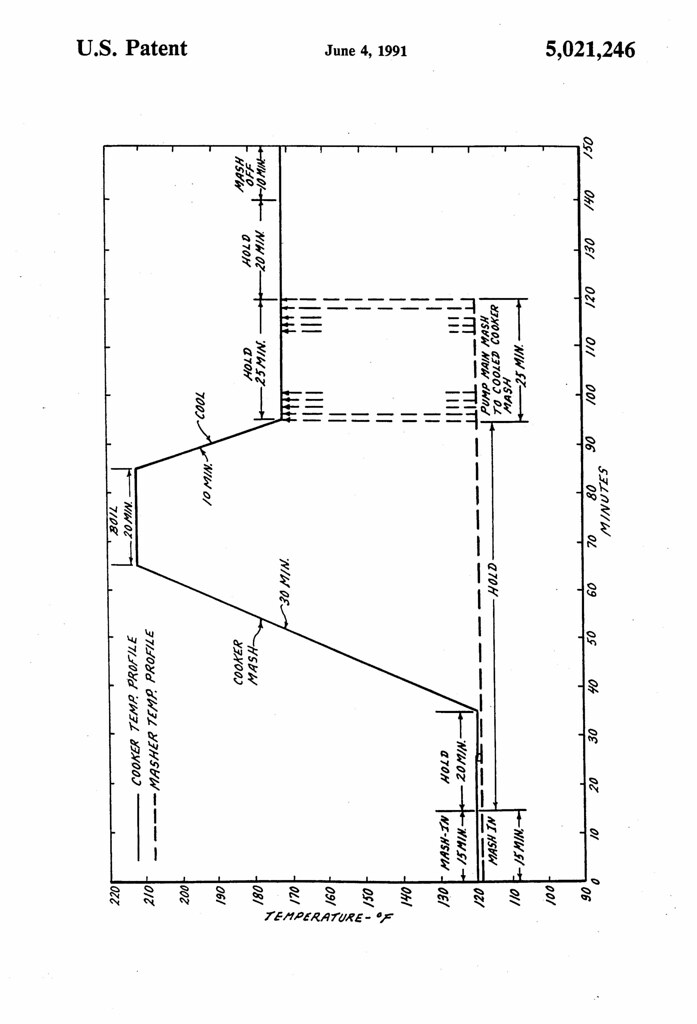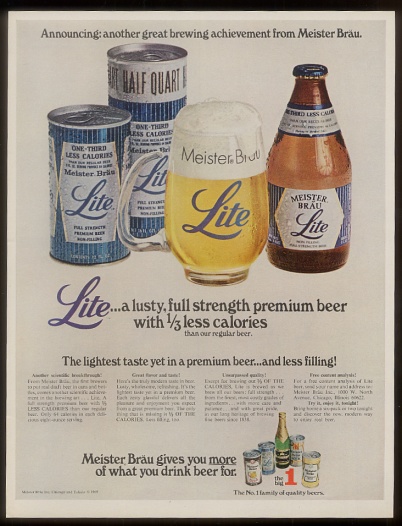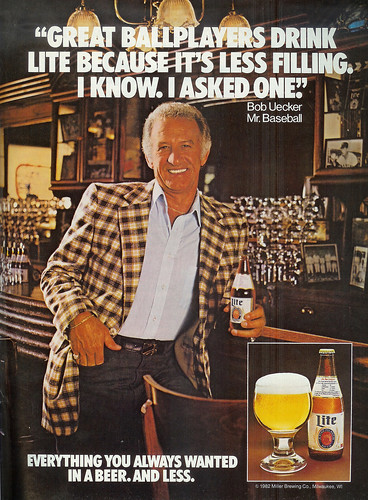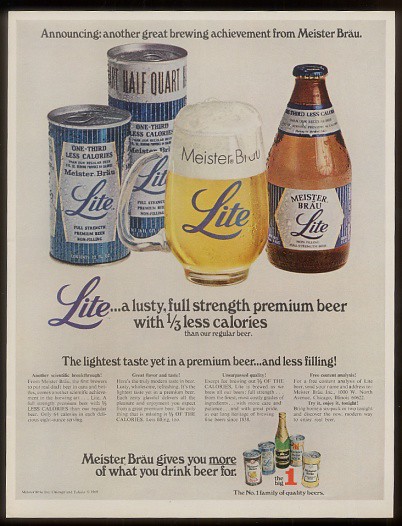
Today in 1991, US Patent 5021246 A was issued, an invention of Roger L. Sieben and Klaus D. Zastrow, assigned to Anheuser-Busch, for their “Step Mashing Process For Producing Low Alcohol Beer.” Here’s the Abstract:
A low alcohol reduced calorie beer is produced by a mashing technique wherein a main mash at a temperature below the activity range for beta-amylase is added incrementally to a brewing liquid at a temperature above the deactivation temperature of beta-amylase and below the deactivation temperature of alpha-amylase at a rate such that the added main mash is substantially instantaneously raised to the temperature of the brewing liquid. This mashing technique limits the conversion of starches by beta-amylase and other enzymes without significant loss of alpha-amylase from overheating to produce a wort having a low real degree of fermentation of from about 40% to about 46%. The main mash has a temperature of about 95° F. to 120° F., and the brewing liquid has a temperature of about 169° F. to 174° F. and can be water or a cooker mash that has been boiled and cooled. Beer can be produced having less than 2% alcohol by weight and less than about 118 calories per 12 ounce serving.




















